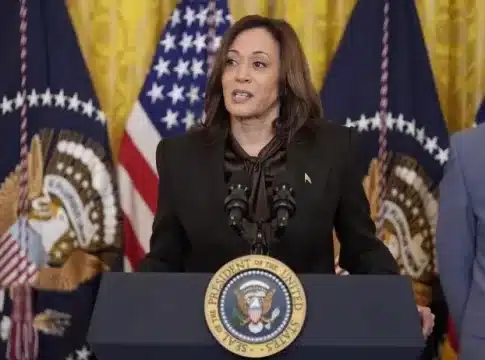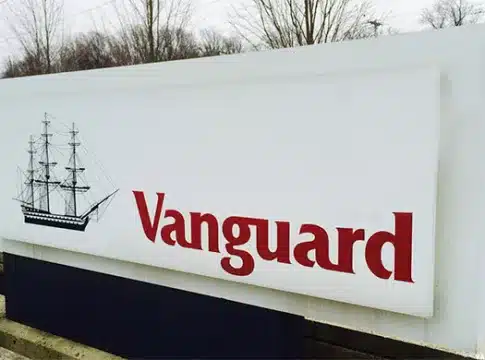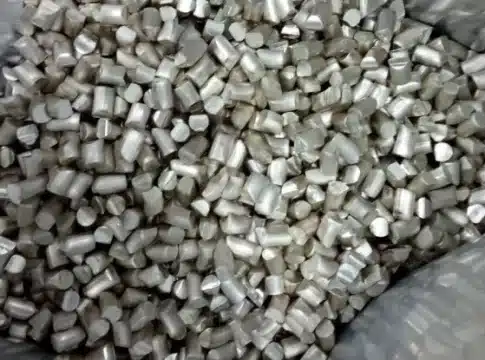US EPA to Invest $20B in Climate and Clean Energy Projects for Underserved Communities
The US Environmental Protection Agency (EPA) announced a significant investment of $20 billion to community lenders to finance climate and clean energy projects. It is a key initiative under the agency’s Greenhouse Gas Reduction Fund, established by the 2022 climate law.
The funding is under President Biden’s Investing in America agenda that’s distributed through the National Clean Investment Fund ($14 billion) and the Clean Communities Investment Accelerator ($6 billion).
Vice President Kamala Harris, EPA Administrator Michael Regan, and other officials made the announcement in North Carolina. The grants were awarded through two of the three programs overseen by the “green bank” established under the Inflation Reduction Act of 2022.
Serving the Underserved
The funding aims to create a national financing network for clean energy and climate solutions, particularly in underserved communities. It could mobilize an additional $130 billion in private capital.
The recipients committed to leveraging private sector funding, with $7 in private investment for every $1 from the federal government. The aim is to reduce or avoid 40 million metric tons of carbon dioxide annually.
Seventy percent of the funding is earmarked for disadvantaged and low-income communities disproportionately affected by climate change. This makes the Greenhouse Gas Reduction Fund the single biggest non-tax investment under the IRA to foster a transition to a clean energy economy while prioritizing communities historically left behind.
Eight nonprofits have been selected by the EPA to administer the loans. The programs will provide financing for various projects aimed at energy efficiency and reducing greenhouse gas emissions.
Eligible projects include residential heat pumps, solar panel installations, energy-efficient home improvements, electric vehicle charging stations, and community cooling centers.
The National Clean Investment Fund (NCIF) will be split among 3 applicants, including the following:
Climate United Fund ($6.97 billion),
Coalition for Green Capital ($5 billion), and
Power Forward Communities ($2 billion).
These organizations will establish national financing institutions to provide capital for clean energy projects.
RELATED: Transforming the American Clean Energy Landscape Under Biden’s Era
The Clean Communities Investment Accelerator (CCIA) will support 5 applicants in establishing hubs to distribute funding and technical assistance to lenders, prioritizing low-income and disadvantaged communities. This includes significant grants for rural areas and tribal communities. CCIA grant awardees are:
Opportunity Finance Network ($2.29 billion)
Inclusiv ($1.87 billion)
Justice Climate Fund ($940 million)
Appalachian Community Capital ($500 million)
Native CDFI Network ($400 million)
The IRA also spurred massive investments in clean energy manufacturing and power in the country. For instance, clean energy manufacturing investments have increased by over 170% in the past year because of the initiatives created by the law, per the National Economic Council data.
A separate database also showed that a total of $213 billion was poured in clean technologies that reduce carbon emissions. The chart below shows that clean energy investments are rising rapidly from 2018 to 2023.
Chart from CIM
Driving the Clean Energy Revolution
With this $20 billion climate and clean energy government funding, another massive private capital would be unlocked. Collectively, the 8 selected applicants have committed to:
Emissions Reduction: The projects will collectively reduce or avoid GHG emissions by up to 40 million metric tons of CO2 equivalent per year. This reduction is significant, equivalent to emissions from 9 million typical passenger vehicles.
Community Benefits: Over $14 billion of the funds will be dedicated to low-income and disadvantaged communities, with $4 billion for rural areas and nearly $1.5 billion for Tribal communities. This ensures equitable distribution of benefits and supports the President’s Justice40 Initiative.
Private Capital Mobilization: The goal is to leverage public funds to mobilize private capital, aiming for a ratio of nearly 7:1 over seven years. This means that for every dollar of grant funds, almost 7 dollars of private investment will be secured.
While this initiative has been praised for its potential impact on reducing greenhouse gas emissions and engaging communities in the clean energy revolution, it has also faced opposition, particularly from Republicans in Congress. They introduced a bill in 2023 to repeal the funding.
Despite challenges, supporters believe that this initiative is a crucial part of the national strategy to combat climate change and transition to clean energy sources.
The EPA expects to finalize the awards in July, pending the resolution of all administrative disputes related to the competitions. By prioritizing underserved communities and leveraging private sector funding, this investment represents a significant step towards addressing the climate crisis and promoting a clean economy for Americans.
The post US EPA to Invest $20B in Climate and Clean Energy Projects for Underserved Communities appeared first on Carbon Credits.



